With Limited Water and Fish Waste, Bengaluru Friends Grow Exotic Greens on Terrace
In aquaponics, food growth is 25 per cent faster, with 75 per cent less water compared to traditional soil-based gardening. Also, the engineers built it at half the market price!
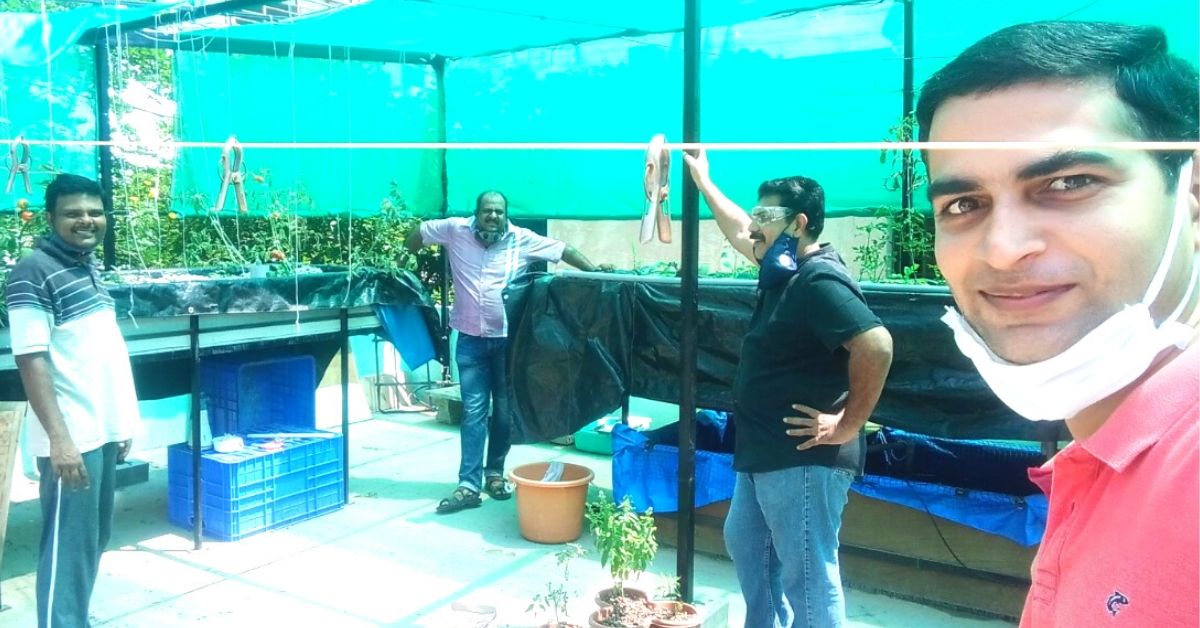
For five engineering friends in Bengaluru, weekends are about overseeing their homegrown system on the terrace.
Pruthvi Ravindra, Vijayaselvan Jayakar, Avinash Mohandas, James Sunny, and Aravind Kalavara, have known each other for the last six years. They eagerly wait for the weekend so that they can witness the “magic” of growing food from fish waste.
‘The Better Home’ brought to you by ‘The Better India’
We created ‘The Better Home’ because you shouldn’t have to choose between non-toxic ingredients and effective cleaning. Our cleaners are safe for babies, pets, skin and our oceans.
Explore our range of powerful, earth-friendly cleaners here.
From tomatoes, beans, ginger, bitter gourd, green chillies, green capsicum to exotic greens like basil, green lettuce, red lettuce and celery, the engineers get enough organic yield from two systems installed on Vijayaselvan’s terrace for their respective families.
Apart from this, the five also have smaller systems in their balconies.
The sustainable part?
Food growth is 25 per cent faster and is done without the use of soil and chemicals. Since water is recycled, the system uses 75 per cent less water compared to the amount used in traditional soil-based gardening.
So what exactly is aquaponics and why is it becoming a go-to-gardening method, especially in urban areas?
“Aquaponics is a combination of aquaculture (growing fish) and hydroponics (growing plants sans soil). It is a sustainable method of raising fish and vegetables. The basic principle is that fish waste is used to feed the plants, and in return, the plants purify the water for the fish. It is a continuous farming cycle that can be done indoors as well. It requires less water, land, and labour than conventional farming,” Pruthvi tells The Better India.
How It Started
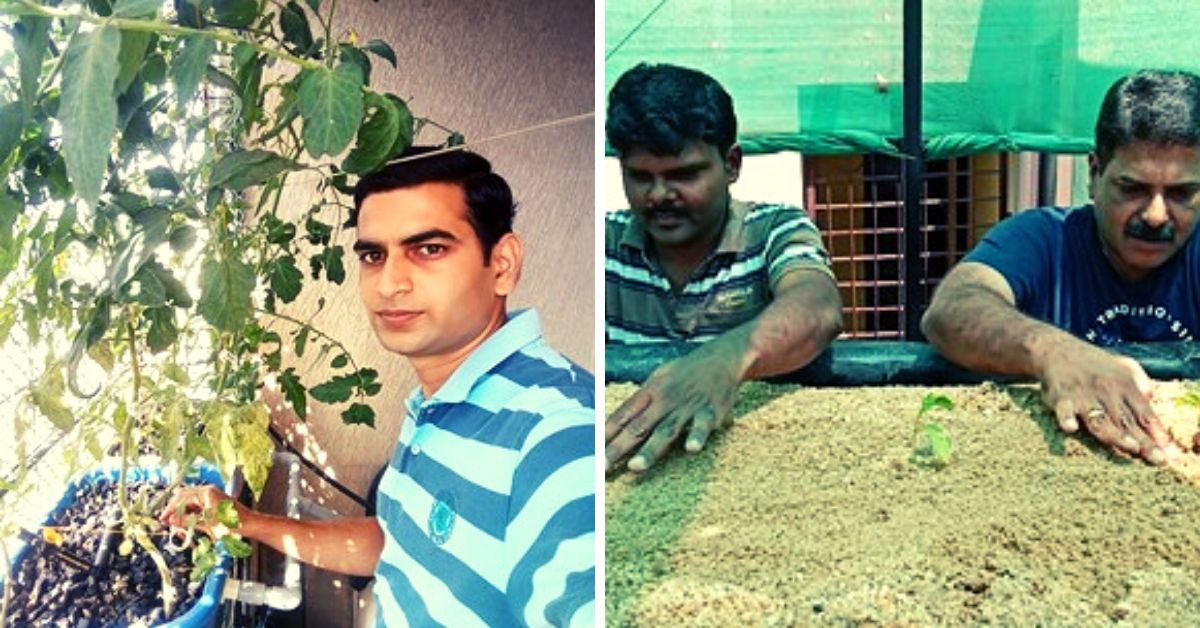
Their shared passion for growing their food led to their aquaponic journey in 2018.
In fact, it was their love for gardening that made them friends from colleagues. They started bonding over plant varieties and different gardening methods. The discussions proved fruitful as they exchanged gardening tips over lunch or coffee breaks.
“In 2018, we stumbled upon an alternative farming method called aquaponics. This was also the same time when Bengaluru witnessed a severe water crisis. It made us realise that our pots were consuming a lot of water, especially in summers. So, to save water, we turned towards aquaponics,” Pruthvi shares.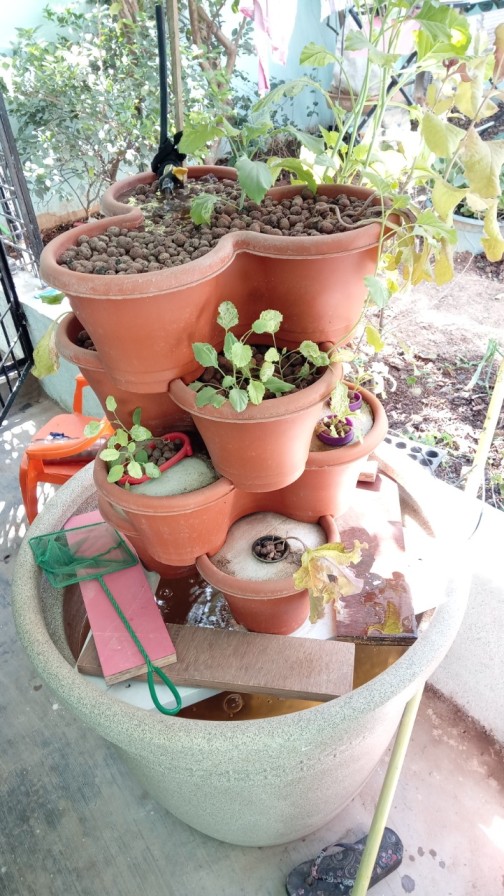
From reading about aquaponics, watching YouTube videos to even visiting aquaponic farms in Bengaluru and Kerala, the marine and mechanical engineers gathered as much information as possible.
Instead of purchasing a ready-made system, the engineers, who are in their 30s and 40s, decided to put their skills to use and build a prototype that would be cheaper.“The market prices are almost double. Besides, if we built our own, we would know how it functioned so that in case of maintenance or a breakdown, we wouldn’t need an outsider to fix it.” This also led to multiple system designs which are optimised for the balcony, indoor and terrace use.
Building Low-Cost Sytems
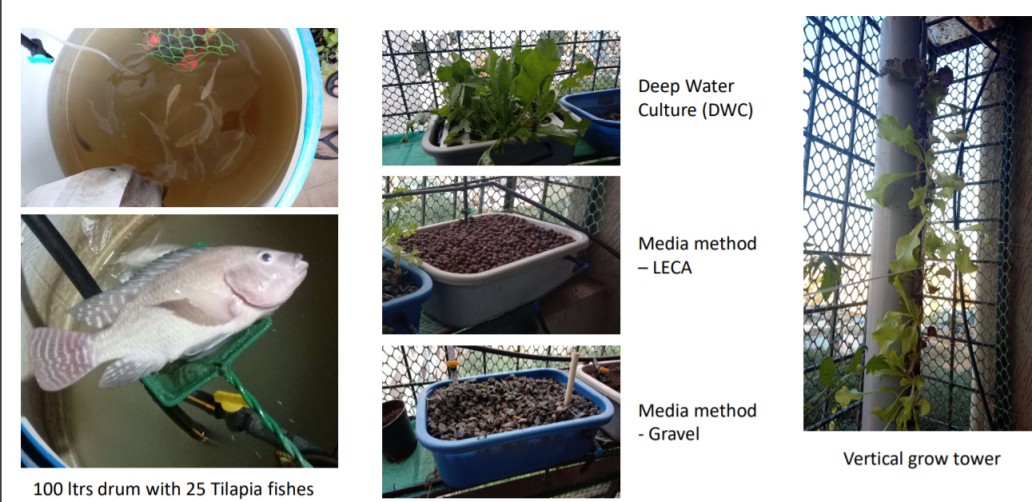
In 2018, the friends gathered the necessary tools and created small prototypes (3×3 ft) that could grow 12 plants.
The equipment needed to set up the system include a fish tank, grow beds (Media method or Deep Water Culture or Nutrient Film Technique), pipes, water pump and filters.
Pruthvi used a 100-litre water drum as a fish tank and used three plastic trays as grow beds on them. Next, he installed a vertical PVC pipe with coir that would allow creepers and lettuce to grow freely. He put tilapia fish and used the floating raft method in his 3×4 feet balcony area.
“I invested around Rs 4,000 for the setup, which proved very cheap compared to the market rates. The prototype showed successful results, in six weeks. I had lettuce, basil, spinach. Capsicum and chillies were ready to harvest in about eight weeks. Based on this success and lessons learnt, we built bigger systems,” shares Pruthvi.

Pruthvi and his friends would meet over weekends to draw designs of the system and purchase raw materials. Though it took them nearly two months to execute the plan, none of them lost the will or the excitement of creating the sustainable system.
They built two aquaponic systems on Vijayaselvan’s terrace, each of 3×1 metre, one foot deep. After several rounds of trials, modifications and errors, the final fish tank had a capacity of 800 litres. It is a 2-tier system with a fish tank at the bottom. The second consist of beds filled with gravel and sand on which they grow plants.
How Does It Work?
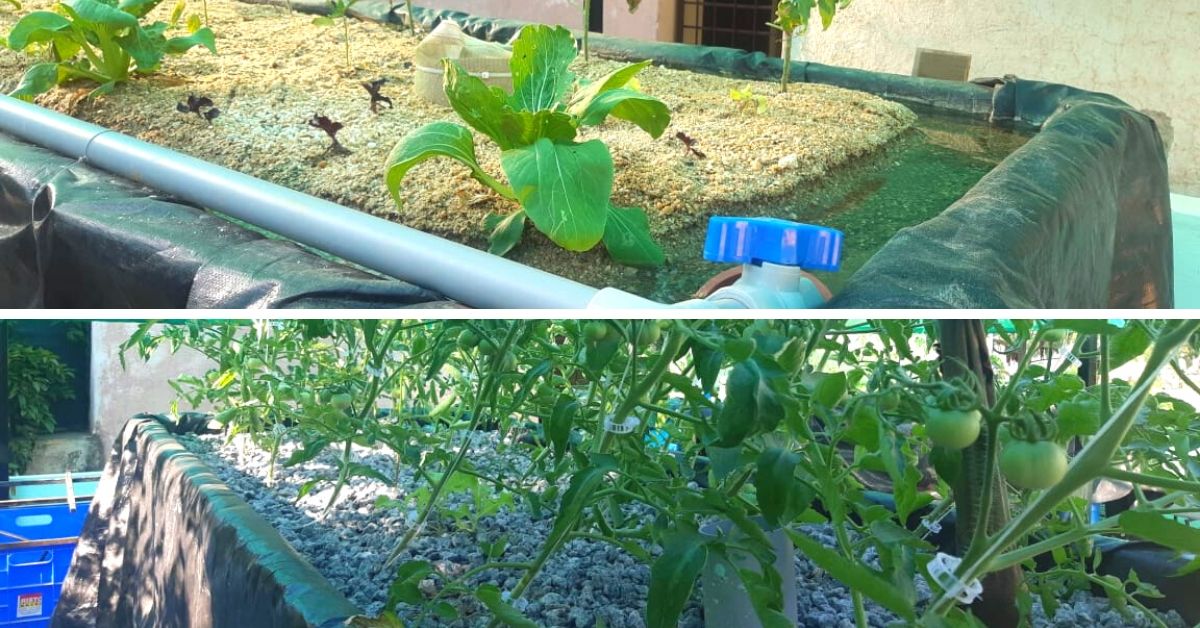
In technical terms, aquaponics is a nitrogen-based cycle that mimics the ecosystem of lakes, ponds, and rivers.
Using chemicals or harmful fertilisers is not an option as it can be fatal for the fish. Pruthvi recommends using marigold plant, neem oil or natural plant-based spray to control pests.
However, it requires power to run the water and air pumps continuously and the only input is fish food.
Here’s how it works:
- Feed the fish
- Healthy bacteria in the bio-filter break down ammonia (fish waste) into nitrates.
- The water, which is now rich in nitrates, is pumped to the grow bed where plants are growing.
- The plants absorb the nitrates from the water and clean it.
- The purified water is then pumped back to the fish tank.
- This cycle, which provides nutrients to the plants, is repeated over and over.
“The first batch harvested 12-13 tomato plants, each giving up to three kilos. Gradually, we added other plants. We replaced soil with sand in one system, and the other one had gravel,” says Pruthvi.
It is important to note that aquaponics is suitable for leafy greens, exotic herbs and vegetables which grow above ground, “We are experimenting growing root vegetables in one of the aquaponics systems by starting with ginger and the growth till now is very encouraging. However, day-to-day vegetables like cucumber, gourds and the greens give a high yield,” says Pruthvi.
Learnings & Takeaways
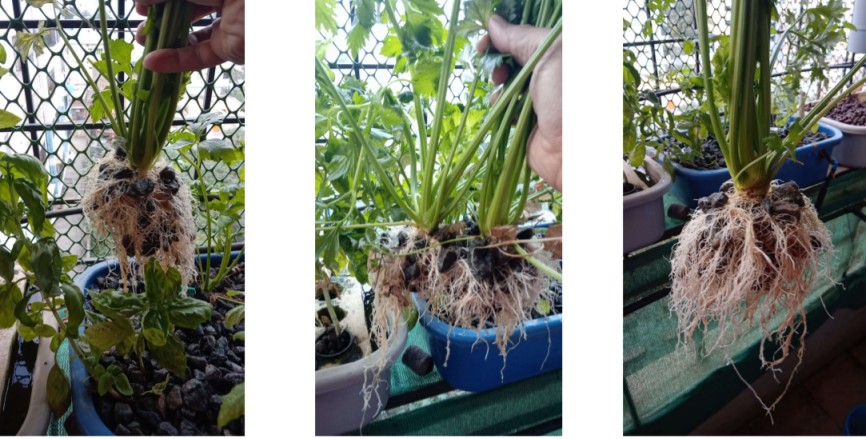
One of their biggest takeaways was saving money through DIY. The shops quoted up to Rs 30,000 for a 3×1 metre system. The friends managed to make it in less than Rs 16,000.
Likewise, the maintenance was also minimal once the fish, water, and plants adapted themselves to the ecosystem.
Here, Pruthvi is quick to mention the extra time that was consumed in failures, “Any imbalance between the fish-to-plant ratio affects the entire system. Water quality would dip or suddenly the pH level of water would increase. We lost many plants and fishes in the process. It took us time to understand all the needs. Now we spend only ten minutes daily to feed the fish and check if the system is running properly. Periodic maintenance once a month which involves cleaning the filters and water pump takes about 30-45 minutes.”
Like Pruthvi says, all one has to do is feed the fish twice every day. When it comes to changing the water, not more than 20 per cent of water is replaced every time the pH level increases or other parameters like ammonia level increases beyond the limit. Replacing only 20 per cent water ensures good bacteria required for the functioning of the system is not lost.
Among all the benefits, the five friends are grateful for getting to consume fresh and natural vegetables every day.
“At least now we know where our food is coming from. We don’t have to depend on market veggies. The system is much easier to harvest, and there is very less effort in maintaining it,” he concludes.
To know more, get in touch with Pruthvi at: [email protected].
(Edited by Shruti Singhal)
Like this story? Or have something to share?
Write to us: [email protected]
Connect with us on Facebook and Twitter.
This story made me
- 97
- 121
- 89
- 167
Tell Us More
We bring stories straight from the heart of India, to inspire millions and create a wave of impact. Our positive movement is growing bigger everyday, and we would love for you to join it.
Please contribute whatever you can, every little penny helps our team in bringing you more stories that support dreams and spread hope.



















